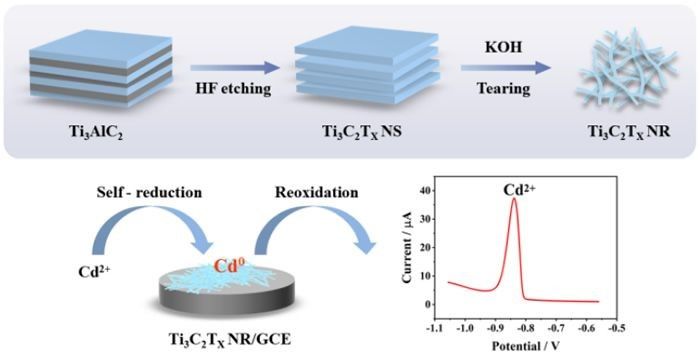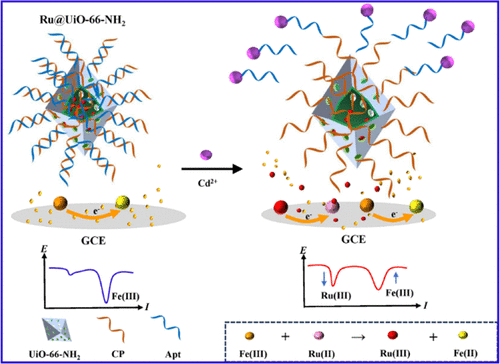Heavy metals are a common class of pollutants in the environment, which is of great significance for their simple, sensitive and efficient detection. Electrochemistry is one of the most common techniques for the detection of heavy metals, and the typical anodic dissolution voltammetry used in it inevitably requires electrode modification and electrodeposition steps. In view of this shortcoming, Professor Zhu Gangbing instructed graduate student Xia Yixuan to propose a new method for deposition-free anodic dissolution voltammetry applied to the detection of heavy metal ions in the environment. Compared with the existing heavy metal ion anode dissolution voltammetry method that requires electrodeposition steps, the electrodeposition-free dissolution voltammetry analysis method has the following advantages: (a) low equipment requirements and cost, (b) high detection efficiency, (c) strong selectivity, (d) low power consumption and long instrument life. Tingting Liu, a graduate student, has designed a new strategy for homogeneous electrochemical sensing for heavy metal Cd2+, which not only does not require an electrodeposition step, but also avoids the electrode modification procedure. The work has been published in several Nature index journal papers (Chemical Communications, 2023, 10.1039/D3CC04715F; Inorganic Chemistry 2023, 62, 42, 17425-17432; Chemical Communications, 2023, 59(25): 3771-3774;Chemical Communications, 2021, 57, 7790)。 At the same time, Prof. Zhu Gangbing has supervised graduate students to publish a number of heavy metal detection articles in SCI Zone 1 journals (e.g., Analytica Chimica Acta, 2023, 1250: 340975; Journal of Hazardous Materials 425 (2022) 12797; Sensors and Actuators: B. Chemical 379 (2023) 133271;Sensors and Actuators: B. Chemical 355 (2022) 131247)。 In addition, Zhou Xun, a graduate student, also designed a colorimetric sensing method for the efficient detection of organophosphorus pesticides, and the related work was published in the Nature index journal Inorganic Chemistry (Inorganic Chemistry, 2023, 62, 13929−13936).

